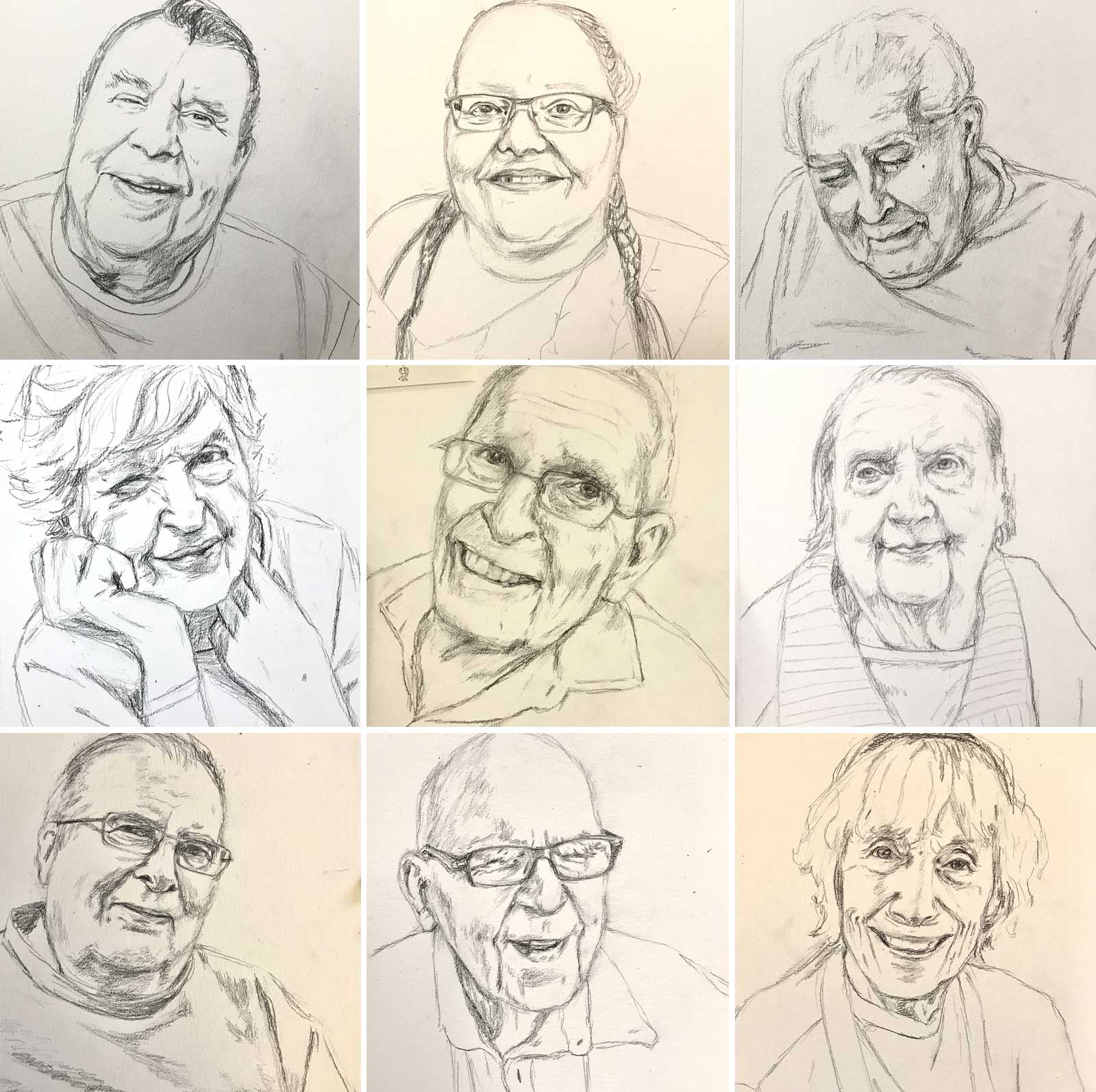Recreation assistant shows she truly sees residents through art
Edmonton General recreation assistant draws portraits of residents.

January 18, 2020
By Lisa Brunelle, Communications Advisor, Covenant Health
Recreation therapy assistant Jennie Vegt is giving the gift of art as she adapts some of her recreation time with residents at the Edmonton General Continuing Care Centre.
She saw that residents enjoyed watching portraits unfold and thought that they would be interested in seeing sketches being created.
“We have so many residents who aren’t able to do any kind of art because they can’t hold a tool themselves,” says Jennie. “I noticed they liked sitting with me and watching me draw. It is a vicarious experience for them.”
Creating a safe environment, Jennie works with residents on Units 11Y and 12Y so that her portraits capture their essence.

Some of the resident portraits Jennie has drawn
“Jennie has taken her talent as an artist and turned it into a therapeutic activity with our residents,” says Sherri McArthur, manager at the Edmonton General. “It sounds magical to me. As Jennie starts sketching, the residents relax and enjoy the interaction, and some start sharing their story.”
Jennie asks residents for their permission before sketching them. To date, all residents have wanted their portraits done. She takes photos of them and invites their feedback about their expressions.
“The first couple of resident reactions made me want to do a portrait for all of the residents, especially a man who seemed really distant. He didn’t make a lot of eye contact,” says Jennie. “When I showed him his portrait, his face brightened right up. Since that day, he has been very engaged in the recreation programs. It feels like he felt I really saw him.”
Since she began doing the portraits about a year ago, Jennie has completed 30 sketches of residents on Units 11 and 12Y and plans to sketch the remaining residents on both units — about 30 more. Some of the residents she has not drawn yet keep asking for their turn.
Jennie says drawing allows her to capture people’s facial structure and expressions, but she can leave things out that they may not like, such as oxygen tubes, skin problems and missing teeth. “They get to see themselves in an almost pure artistic sense, and I think it’s really good for their self-esteem.”
When the portraits are finished, Jennie puts them up on the bulletin boards in the residents' rooms. Many families choose to frame them.
“It’s like she touches their souls and captures their essence when she’s drawing the residents,” says Sherri. “What the residents gain by this experience has exceeded my expectations.”
Jennie says it’s rewarding when someone tells her a portrait really captures a person. She tries to draw an engaged, happy expression of the residents that is meaningful for their families.
“I hope that when people, including those in the public, see the portraits of these residents, they see the humanity of this demographic,” says Jennie. “I hope it encourages them to be more careful and remember whom we’re all trying to protect.”